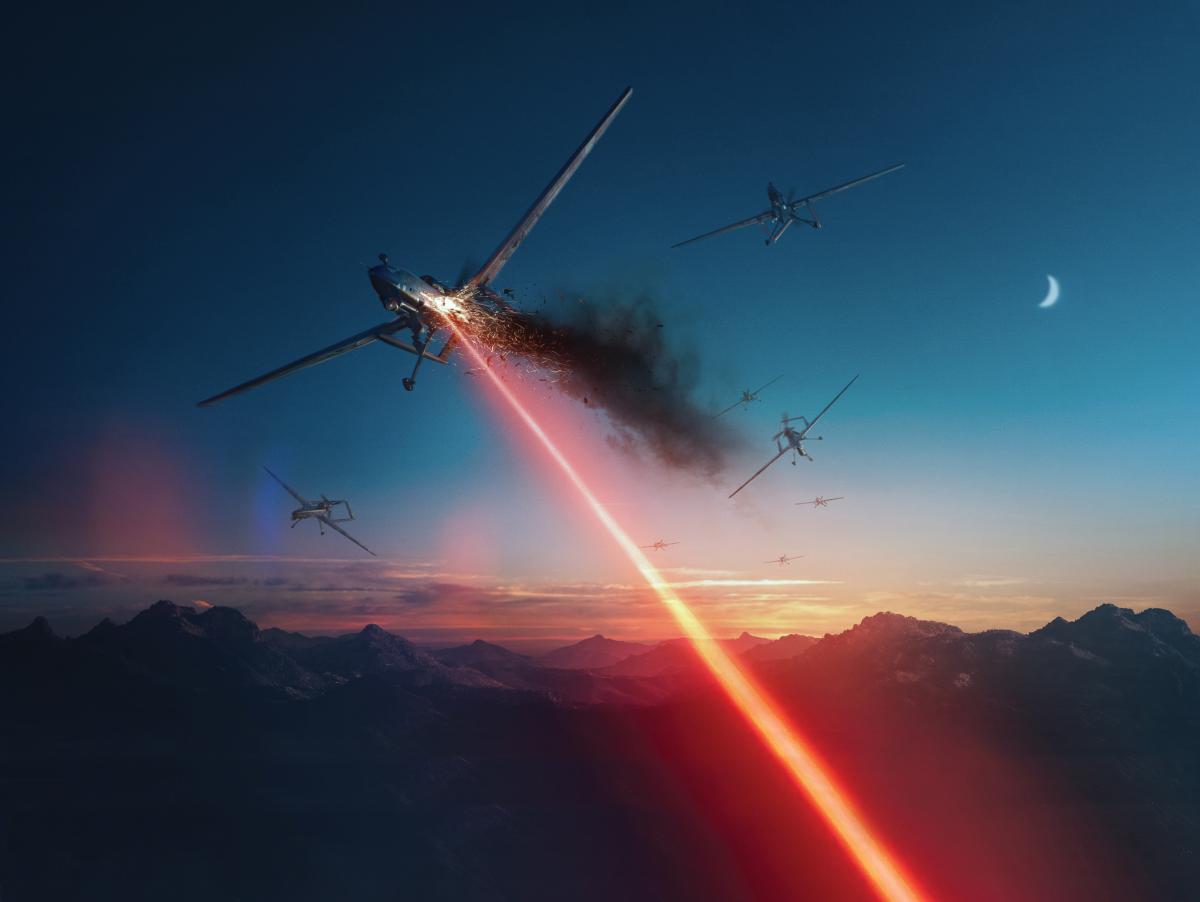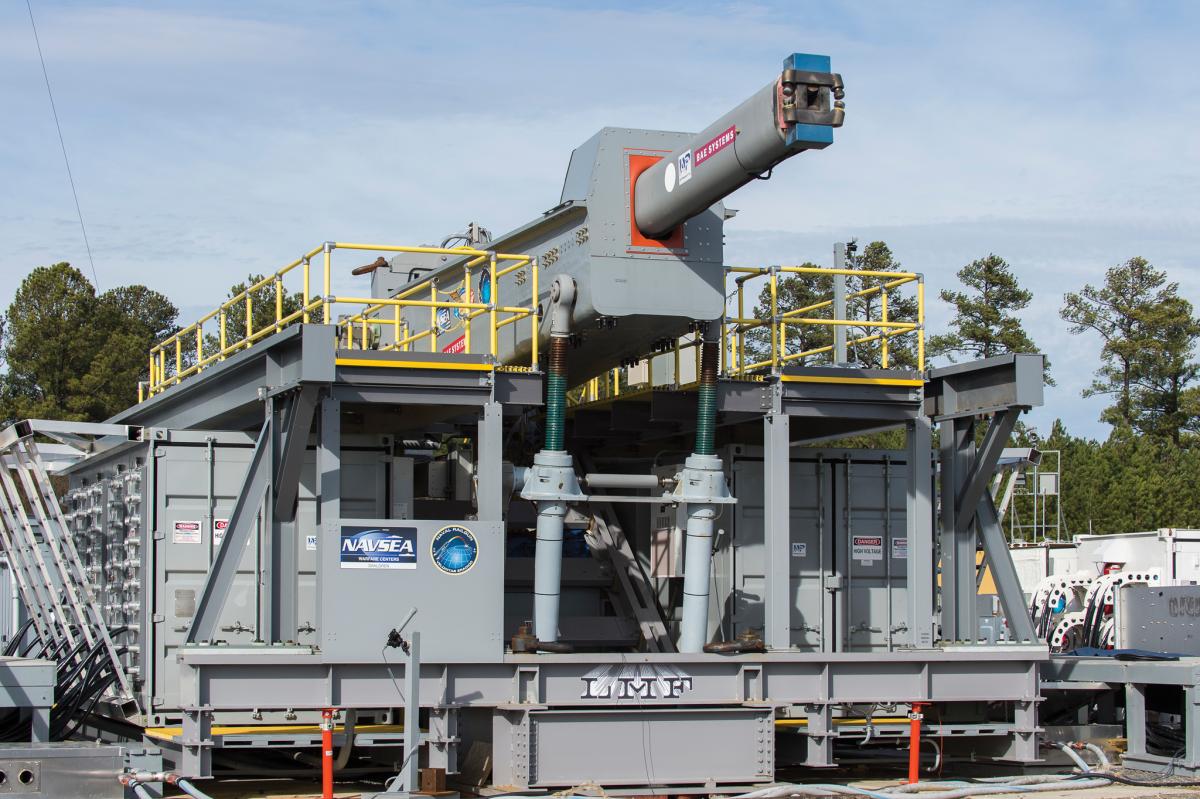The era of U.S. technological dominance is over. Indeed, in many areas, including military technology, the gap has narrowed to parity or near-parity. Nations such as Russia and China, as well as countries to which these nations proliferate weapons, are deploying advanced weapons that demonstrate many of the same technological strengths that traditionally have provided a basis for U.S. advantage.
In response, the Department of Defense initiated a “Third Offset Strategy” that sought to asymmetrically compensate for a disadvantaged position. Rather than competing head-to-head in an area where an adversary may possess significant strength, an offset strategy seeks to shift the axis of competition, through the introduction of new operational concepts and technologies, toward one in which the United States has a significant and sustainable advantage.
The Third Offset Strategy focused heavily on artificial intelligence and machine learning. These technologies offer great promise, and when fully deployed, they will provide U.S. forces the ability to operate at machine speed. However, they are enablers, not weapons. They will not be enough to compensate for potential adversaries’ advantages in time, space, and force size, especially when the United States is playing an away game.
What if the U.S. military had offensive and defensive weapons that could operate not just at machine speed, but at light speed? If the United States wants to regain technological dominance in the battlespace, it must embrace a Fourth Offset Strategy built on one of the most disruptive military technologies to emerge in some time: directed-energy weapons.
Directed-Energy Weapons
More than a century ago, a series of scientific discoveries provided the foundation for developing lasers and other directed-energy devices.
In 1895, Wilhelm Röntgen detected X-rays. In 1897, John Thompson demonstrated the existence of electrons and proved the divisibility of atoms. Wilhelm Wien discovered the electron’s positively charged cousin, the proton, in 1898. The following year, Ernest Rutherford traced alpha and beta particles radiating from uranium, and in 1900, Antoine-Henri Becquerel showed that beta particles were, in fact, electrons.1
The greatest breakthrough, however, came in 1905 when Albert Einstein published the “Special Theory of Relativity.” This began a revolution in theoretical physics, and by 1917, Einstein had explained how atoms could be stimulated to emit energy at specific wavelengths, a discovery that led directly to the development of lasers.2
Scientists have long recognized that electromagnetic force can be used as a weapon of war, so it is little wonder that the idea of directed-energy weapons soon began to capture the attention of military planners. Much of the defense-related research has been focused on how to fashion electromagnetic energy into powerful, precise beams capable of creating militarily useful effects.
Weapons classified under the general heading of directed-energy weapons (DEW) include high-energy lasers, electromagnetic railguns, and radio frequency weapons (high-power microwaves or ultra-wideband weapons).3 Over the past decade, the technical maturity of these weapons has accelerated, and what was once “promise” is now emerging as “probable.”4 The Office of Naval Research (ONR) is developing and working to scale up the power of free-electron lasers, chemical lasers and their associated beam directors, radio-frequency weapons, and full-scale electromagnetic railguns capable of launching precision-guided hypersonic projectiles.5
Directed Energy for Joint & Naval Missions
A Center for Strategic and Budgetary Assessments (CSBA) report highlighted the challenges of trying to match potential adversaries with kinetic weapons, noting:
In future conflicts with capable enemies possessing large inventories of guided missiles, it may be operationally risky and cost-prohibitive for the U.S. military to continue to rely exclusively on a limited number of kinetic missile interceptors. Such a missile competition could allow an adversary to impose costs on U.S. forces by compelling them to intercept each incoming missile with far more expensive kinetic munitions.
There may be less resource-intensive options. . . . Offensive and defensive [directed-energy] capabilities, including high-energy lasers and high-power microwave weapons, could provide U.S. forces with nearly unlimited magazines to counter incoming missiles at a negligible cost per shot.6
Directed-energy weapons are poised to take on a significant role in shipboard and task force self-defense. A nation seeking to challenge the United States for control of local seas probably will turn to cruise missiles, as they offer an economical method for conducting an attack with a reasonable probability of inflicting damage on enemy ships. As the CSBA report suggests, against a cruise missile threat, directed-energy weapons could serve both as high-resolution sensors and as weapons.7
Directed-energy systems provide several mechanisms for cruise missile engagement and destruction. Using directed-energy systems, the defender has a speed advantage of roughly six orders of magnitude, reducing the time of flight required to reach an approaching missile. In the two to five seconds it takes to deposit laser energy on a target, a Mach 4 missile will travel only about three nautical miles. In addition, the attacker could be destroyed 16–18 nautical miles from the defending platform––more than twice the best distance attained with conventional systems.8 Embarked on Navy warships, these weapons have the potential to become the weapon of choice for defeating cruise or ballistic missiles.
A recent Congressional Research Service report on DEW highlighted the potential of these technologies for naval warfare:
The Navy is currently developing three potential new weapons that could improve the ability of its surface ships to defend themselves against enemy missiles—solid state lasers (SSLs), the electromagnetic railgun (EMRG), and the hypervelocity projectile (HVP). Any one of these new weapon technologies might be regarded as a “game changer” for defending Navy surface ships against enemy missiles. If two or three of them are successfully developed and deployed, the result might be considered not just a game changer, but a revolution.9
The report notes key features directed-energy weapons bring to the naval fight: fast engagement time, the ability to counter radically maneuvering missiles, precision engagement, and graduated response. The Navy is testing these weapons at sea. ONR had a prototype high-energy laser deployed on board the USS Ponce (AFSB(I)-15) for several years, with promising initial results.10
Swarming attack boats pose another significant challenge to naval ships operating in littoral waters. The damage inflicted on the USS Cole (DDG-67) by one small, explosive-laden boat is fresh in the minds of Navy planners, though it has been almost two decades since the attack. Directed energy offers the potential to disrupt the sensors of an attacking small craft at the maximum line of sight.11
Even when fast attacking boats are discernible as a threat, engaging them in the vicinity of friendly or neutral forces requires more precision than is available with explosive ordnance.12 The rapid responsiveness of directed-energy weapons makes them particularly useful against high-speed patrol boats or surface-effect craft that can outmaneuver conventional gun systems.13
Directed-energy weapons such as the solid-state laser and the high-powered microwave can be particularly effective against swarming small boats––and the people who man them––and are superior to kinetic weapons for a number of reasons. Chief among them is the ability to use these weapons in a graduated response mode, from nonlethal warning shots to lethal, accurate fires.14
Directed-energy weapons also can be useful in ballistic missile defense. They offer the potential to target ballistic missiles in all phases of their trajectory, including launch, boost, and in-flight, thus helping to restore the advantage to the defender. The long range of directed-energy systems and their ability to target the guidance systems of ballistic missiles make them particularly useful.15
While not directed-energy weapons in the classic sense, railguns are another emerging technology that uses energy in a disruptive manner, harnessing kinetic energy instead of explosives to destroy targets. Modern railgun technology has been under development since the early 1980s. Ranges greater than 200 nautical miles are envisioned, with GPS-guided projectiles traveling at six times the speed of sound. The fact that railguns do not require powders or explosives also will free magazine space for strike and other mission areas.16
The potential impact of electromagnetic railguns for supporting forces ashore will be profound. The power supplied by an all-electric ship such as the DDG-1000 is sufficient to fire up to 12 electromagnetic projectiles per minute. The weapon can throw a 20-pound projectile some 300 miles in about six minutes. Initially traveling 8,200 feet per second and striking its target at 5,000 feet per second, that projectile will penetrate tens of feet of reinforced concrete by its kinetic energy alone.17
A decade and a half ago, Vice Admiral Arthur Cebrowski, then director of force transformation for the Defense Department, envisioned the transformational potential of DEW––and the risks inherent in not pursuing this technology:
Directed-energy weapons represent big bets we should make. I’m not just talking about laser weapons, but about the kinds of weapons that travel at the speed of light. Think back to what happened when we put motorized vehicles on the battlefield and people no longer had to move on foot or horseback. What a profound difference that made. Then we introduced aircraft. . . . Then we increase that power when we go to very high-speed air vehicles, say in the form of very high-speed weapons.
Very high-speed weapons may be traveling on the order of 5,000 feet per second, Mach 4.5 roughly, or even doubling that to 10,000 feet per second––but then consider 186,000 miles per second, the speed of light. Just imagine the magnitude change you get with speed-of-light weapons. We . . . are looking at being able to marry the speed of weapons with the speed of communications. This can introduce a profoundly different military world.18
While directed-energy weapons represent the most disruptive technologies that can be adapted for military use today, their development has not yet been mainstreamed to the same extent as artificial intelligence and machine learning. Unless or until these emerging DEW capabilities are fast-tracked, the U.S. military may be able to operate at machine speed but lack the offensive and defensive punch to prevail in combat.
As the threats posed by peer competitors have accelerated, senior Defense Department officials have signaled a desire to accelerate the development and fielding of DEW. Under Secretary of Defense for Research and Engineering Michael Griffin noted at a recent Directed Energy Summit:
Directed energy is one of the key technologies called out in the National Defense Strategy. I do believe we’re going to put our money where our mouth is. Directed energy will be a beneficiary in the budget process. This is more than just big lasers, and includes high-powered microwave weapons and neutral particle beam weapons.19
This is a promising aspiration, but it must be sustained by an overarching strategy to make DEW the core of U.S. military technological innovation.
Toward a Fourth Offset Strategy
A decade ago, a National Intelligence Council report addressed the challenge of shepherding new technologies to the point where they transition to the end users, noting, “The pace of technological innovation will be key. Major technologies historically have had an adoption lag.”20 Today’s promising directed-energy weapons are caught in this adoption lag dilemma.
While it may seem counterintuitive, directed-energy weapons’ potential to disrupt the way militaries fight may be the thing impeding their more-rapid adoption. The change is almost too great to contemplate, so their use often is consigned to the distant future, not something to leverage today.
To overcome this impediment, it might be helpful to recall that directed-energy-based systems have been used by the U.S. military for decades. Laser range finders and targeting systems are deployed on tanks, helicopters, tactical fighters, and sniper rifles. These systems provide both swifter engagements and greatly enhanced precision by shortening the sensor-to-shooter cycle. Now, directed-energy weapons are poised to shorten––often dramatically––the shooter-to-target cycle. Directed-energy weapons provide a means for instantaneous target engagement, with extremely high accuracy and at long ranges.
What the Navy Must Do
The Navy has signaled an intention to accelerate the fielding of directed-energy weapons. Vice Chief of Naval Operations Admiral William Moran has said, “The Navy is fully committed to developing and fielding advanced directed-energy weapons.”21 Chief of Naval Operations Admiral John Richardson’s “Design for Maintaining Maritime Superiority 2.0” challenges the Navy to “develop and field the family of laser weapons (low-power lasers, high-power lasers, Surface Navy Laser Weapons System) beginning in 2019 and no later than 2025.”
But the Navy has been signaling this “intent” since at least the beginning of this decade, with few concrete results.
Two decades ago, a study examining technological change in the U.S. Navy noted how major technical innovation has met with resistance, and even hostility, from line officers wedded to existing capabilities.22 When the United States was the uncontested global power, and the U.S. military had a clear technological edge over potential adversaries, this brake on technology insertion might have been a mere inconvenience. That is no longer the case. In 2019, the Navy is out-sized, out-sticked, and outgunned by potential adversaries. It needs DEW to shift the playing field back to its advantage.
The technologies embodied in the Third Offset Strategy will enable the U.S. military to fight at machine speed. Now we must plan and execute a Fourth Offset Strategy with speed-of-light directed-energy weapons at its core, and the Navy must take the lead. Directed-energy weapons are poised to provide the U.S. military, and especially the Navy, with its biggest asymmetric technological advantage ever. It’s time to make the big bets that will put them in the hands of our warfighters.
1. See Loren Thompson and Daniel Goure, Directed-Energy Weapons: Technologies, Applications and Implications (Washington, DC: The Lexington Institute, February 2003), and Scott Truver, “Naval Warfare at the Speed of Light,” Jane’s Navy International, July/August 2003.
2. Helge Kragh, Quantum Generations: A History of Physics in the Twentieth Century (Princeton, NJ: Princeton University Press, 1999).
3. George Galdorisi and Lynn Pullen, Leveraging Directed-Energy Weapons to Accelerate Naval Transformation: Prospects and Issues (Arlington, VA: Center for Security Strategies and Operations, December 2004).
4. See Yasmin Tadjdeh, “Directed Energy Weapons Gaining Acceptance Across U.S. Military,” National Defense, August 2016.
5. Science and Technology for the 21st Century Warfighter (Washington, DC: Office of Naval Research, 2004). See also Galdorisi and Pullen, Leveraging Directed-Energy Weapons to Accelerate Naval Transformation, and William McCarthy, Directed Energy and Fleet Defense: Implications for Naval Warfare (Maxwell Air Force Base, AL: Air War College Press, May 2000).
6. Mark Gunzinger and Chris Dougherty, “Changing the Game: The Promise of Directed Energy Weapons,” Center for Strategic and Budgetary Assessments, 2012.
7. Andrew Koch, “Sea Power 21 to Change Face of U.S. Navy,” Jane’s Defense Weekly, 19 June 2002.
8. New World Vistas: Air and Space Power for the 21st Century, Directed Energy volume.
9. Ronald O’Rourke, “Navy Shipboard Lasers for Surface, Air, and Missile Defense: Background and Issues for Congress,” Congressional Research Service, 23 October 2018.
10. See, for example, Ben Werner, “Navy Requests $300M to Develop Shipboard Defensive Laser Weapons,” USNI News, 26 February 2018.
11. George Galdorisi and Scott Truver, “The Zumwalt-Class Destroyer: A Technology ‘Bridge’ Shaping the Navy After Next,” Naval War College Review (Summer 2010).
12. “Report of the Defense Science Board Task Force on High Energy Laser Weapon System Applications,” Defense Science Board, Department of Defense, June 2001.
13. McCarthy, Directed Energy and Fleet Defense. See also Claude Berube, “The Post Oceanic Navy, the New Shadow Zones, and the U.S. Navy’s Force Structure Challenge,” Small Wars Journal (April 2009).
14. Hemani Kaushal et al., “Applications of Lasers for Tactical Military Operations,” IEEE Access, 25 October 2017.
15. See, for example, CAPT Kevin Eyer, USN (Ret.), “Where Is Navy BMD?” U.S. Naval Institute Proceedings 144, no. 6 (June 2018), and John Grady, “Panel: U.S. Must Invest More in Joint and Integrated Air and Missile Defense,” USNI News, 27 November 2018.
16. H. G. Ulrich and Mark Edwards, “The Next Revolution at Sea,” U.S. Naval Institute Proceedings 129, no. 10 (October 2003). See also, Truver, “Naval Warfare at the Speed of Light.”
17. See Sam LaGrone, “Navy Studying Hyper Velocity Projectile, Other Ammo, for Zumwalt Guns,” USNI News, 21 January 2019.
18.“Interview with Arthur K. Cebrowski,” Defense AT&L, March−April 2004.
19. “Pentagon’s Increased Concern Over Russia, China Pushing Investments in Directed Energy Weapons,” Jane’s Defence Weekly, 21 March 2018.
20. “Global Trends 2025: A Transformed World, [PDF]” National Intelligence Council, November 2008.
21. Otto Kreisher, “Navy ‘Committed’ to Directed Energy Weapons; Supporting Air Force System Development,” USNI News, 23 June 2016.
22. William McBride, Technological Change and the United States Navy, 1865−1945 (Baltimore, MD: Johns Hopkins University Press, 2000).






